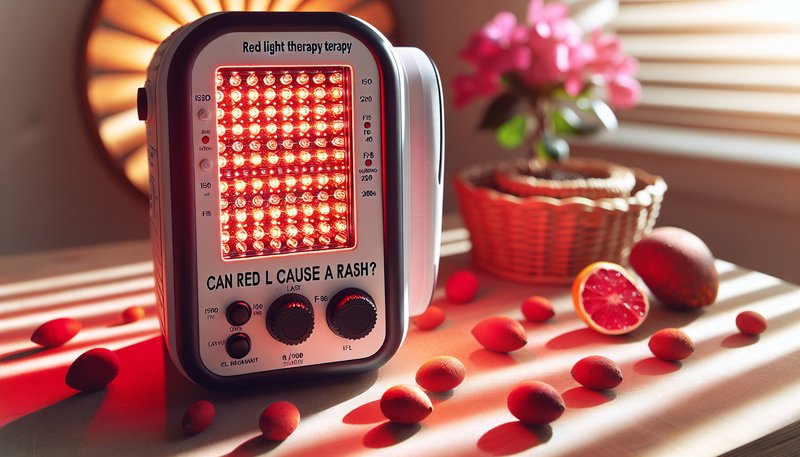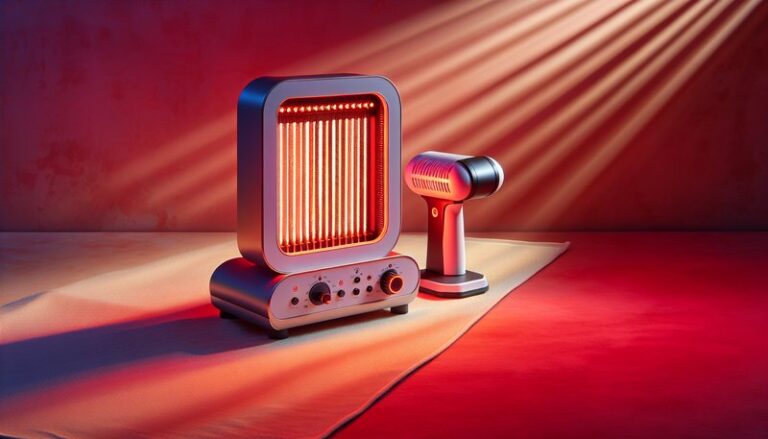Can Red Light Therapy Cause A Rash?
Have you ever wondered if red light therapy could lead to skin irritation or rashes?
This article aims to explore this topic in depth, examining whether red light therapy can indeed cause a rash, the potential reasons behind it, and what precautions can be taken to minimize risk. By the end, you’ll have a clearer understanding of the safety and efficacy of this popular treatment modality.
Key Takeaways
- Red light therapy is generally safe and non-invasive, but some users may experience skin reactions.
- Potential rashes could be due to pre-existing skin conditions, sensitivities, or incorrect usage.
- Proper guidance and consultation can help mitigate rash risks.
What is Red Light Therapy?
Red light therapy (RLT) utilizes specific wavelengths of light, typically ranging from 600 to 650 nanometers, to penetrate the skin. This non-invasive treatment has gained popularity in skincare, pain relief, and healing due to its myriad benefits.
Red light therapy works by stimulating cellular function, promoting collagen production, and increasing circulation. It is frequently used for:
- Skin rejuvenation and anti-aging
- Treating acne and scarring
- Reducing inflammation and pain
Despite its benefits, some users may report skin reactions, which raises questions about its safety.
What are the Benefits of Red Light Therapy?
Understanding the advantages of red light therapy can help contextualize its overall safety and effectiveness.
Enhanced Skin Health
RLT promotes collagen production, aiding in defining skin elasticity and reducing fine lines. Studies show improvements in skin texture and tone after regular treatments.
Pain and Inflammation Reduction
Many users report relief from chronic pain conditions like arthritis or muscle injuries, thanks to RLT’s anti-inflammatory effects.
Wound Healing
Red light therapy can accelerate wound healing, making it a popular choice for individuals recovering from surgery or injuries.
Improved Mood and Sleep
The therapy can also have positive effects on mood regulation and sleep quality, promoting overall well-being.
Is it Possible to Develop a Rash from Red Light Therapy?
While red light therapy is broadly considered safe, it is possible for some individuals to develop a rash or skin irritation. This reaction may stem from several factors, including:
- Skin Sensitivities: Individuals with sensitive skin or pre-existing conditions may be more prone to irritation.
- Improper Use: Using devices incorrectly, such as too close to the skin or for prolonged periods, may aggravate the skin.
Before beginning red light therapy, understanding these risks can help individuals make informed decisions.
What are the Advantages of Proper Use?
Practicing correct usage—such as maintaining appropriate distance and limiting session times—can enhance the effectiveness of red light therapy while reducing the risk of rashes.
What are the Disadvantages of Improper Use?
Neglecting guidelines can lead to complications such as burns, rashes, or ineffective treatment. Always ensure to follow professional advice.
What are the Things to Consider Before Starting Red Light Therapy?
Before starting any new treatment, it’s important to be aware of potential risk factors and necessary precautions.
Consult a Dermatologist
It’s advisable to consult with a healthcare professional, particularly for individuals with existing skin conditions like eczema or rosacea.
Select the Right Device
Different devices deliver varying levels of intensity. It’s crucial to use FDA-cleared devices designed for the intended treatment.
Understand Your Skin Type
Recognizing your skin type and any sensitivities can guide you in adjusting treatment settings for optimal safety.
Monitor Skin Reactions
Keep track of any changes in your skin, especially during the initial treatments, to identify potential irritations early.
What are the Alternatives to Red Light Therapy?
If you are concerned about the potential for rashes or other reactions, consider these alternatives.
Topical Treatments
Products containing retinoids or hyaluronic acid can enhance skin health without the use of light therapy.
Chemical Peels
These treatments can improve skin texture and tone but should be done by a qualified professional to avoid adverse reactions.
Microdermabrasion
This minimally invasive procedure also seeks to enhance the skin’s appearance, effective for superficial concerns.
Conclusion: Is it Recommended to Use Red Light Therapy?
Overall, red light therapy offers a safe and effective treatment option for various skin and health issues, but individuals must approach it with caution. If you’re prone to skin rashes or sensitivities, consulting a healthcare professional can help tailor the therapy to your specific needs, ensuring a beneficial experience.
Find out everything in Buy Red Light Therapy?
Frequently Asked Questions
Can everyone use red light therapy?
Most individuals can safely use red light therapy, but those with specific skin conditions should consult a dermatologist beforehand.
Find out the truth in Can I use red light therapy post-peel?
How often should I use red light therapy?
The optimal frequency can vary depending on individual needs, but many users report benefits from 2-3 sessions weekly.
What should I do if I experience a rash after treatment?
If you develop a rash, discontinue use and consult a healthcare professional for a thorough evaluation.
Are there any long-term effects of red light therapy?
Currently, research suggests minimal to no long-term adverse effects, but more studies are needed for complete assurance.
What can I expect during a red light therapy session?
Most sessions last around 10-20 minutes, during which you may feel warmth without pain or discomfort.
By being informed and cautious, you can enjoy the many benefits that red light therapy has to offer while minimizing potential risks.




